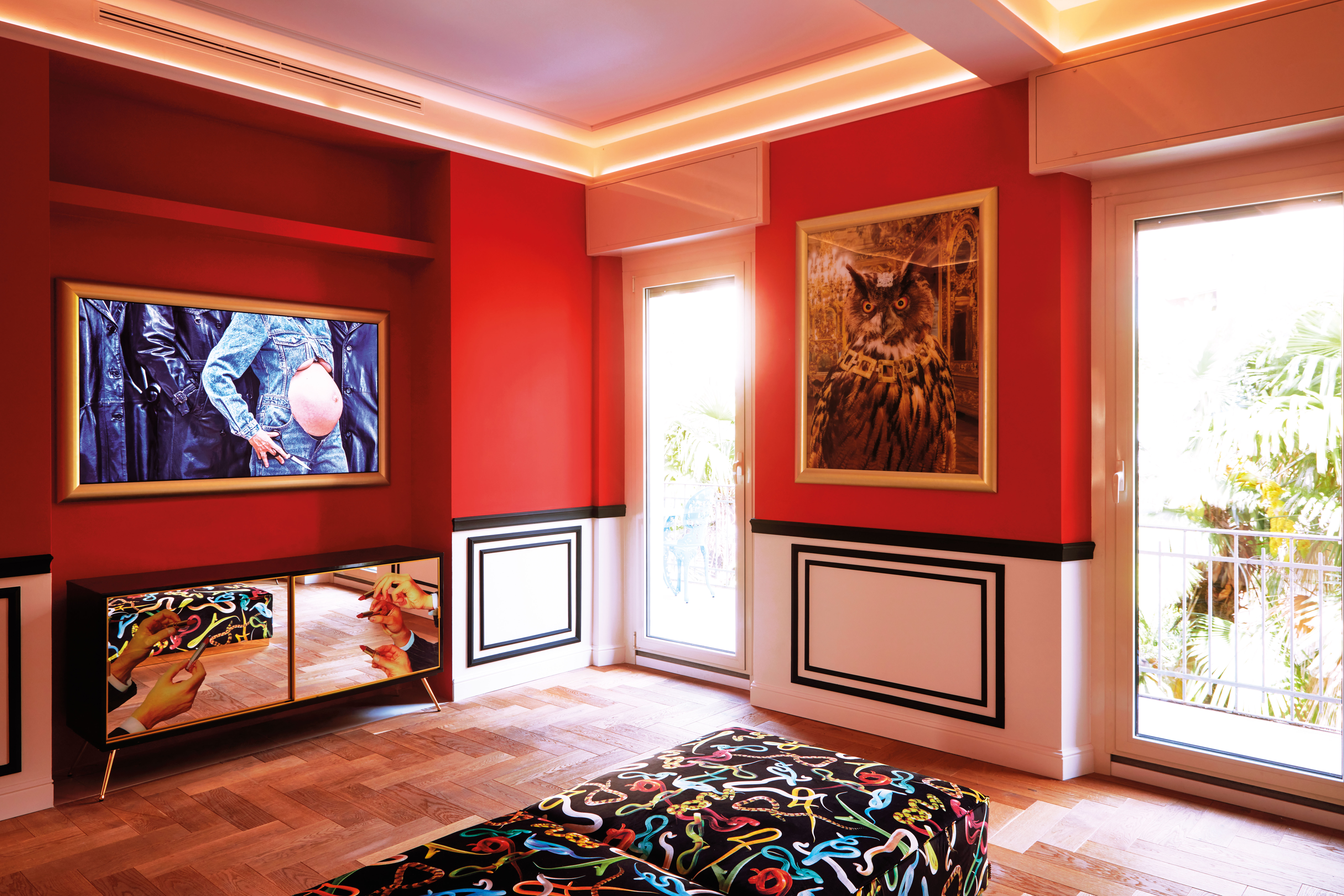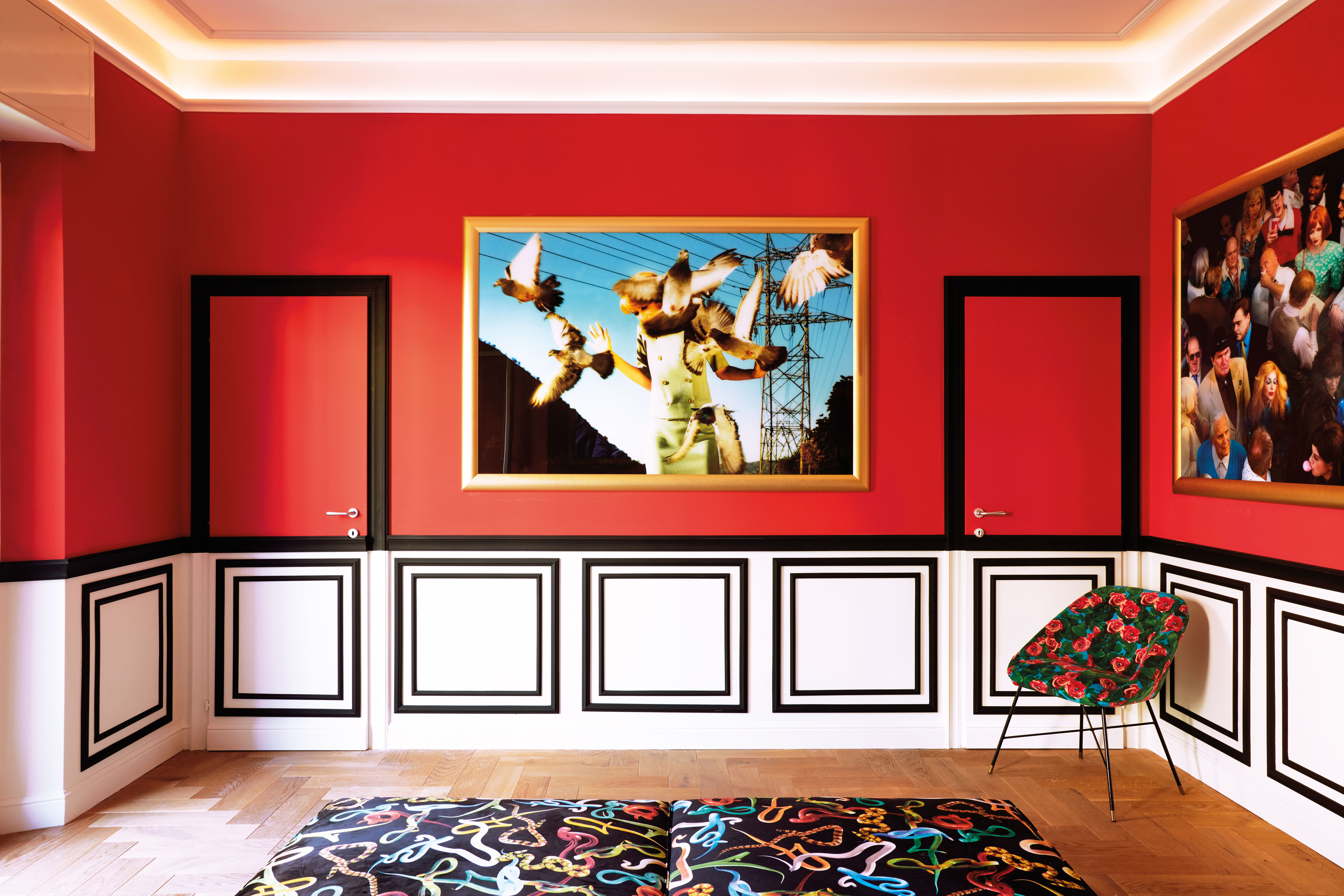
During Milan Design Week 2024, Toiletpaper launched the Toiletpaper Apartment, a new space designed for exhibitions, events and 'anything' related to creativity. The Apartment is set on via Balzaretti 8, a Milanese street that has been transformed into a permanent public art installation with the brand's distinctive motifs on the buildings' facades, and is next door to 'Lipstick House', the headquarters of the irreverent editorial project founded over ten years ago by artist Maurizio Cattelan and photographer Pierpaolo Ferrari.
Inside the Toiletpaper Apartment

The ToiletAlex PaperPrager project marked the Apartment's debut, and it's the result of an encounter between the iconographic universe of Toiletpaper and the mysterious imagery of the American artist, director, and screenwriter Alex Prager.
Presenting a traditional photographic exhibition and a collaboration for another photographer is a departure from Toiletpaper's usually large-scale takeovers (which in the past have included a show at Mumbai's NMACC). ‘Compared to what we have done so far, we conceived the Toiletpaper Apartment as a place that tries to highlight one thing at a time,' says Ferrari. 'We are used to a Toiletpaper environment full of images, in an overlay of layers, a Wunderkammer or mesmerizing experience. When you insert a new element into our classic environment, the risk is that it gets a little lost in the aesthetics.’

This contrast is evident in the main room, a large hall with uncharacteristically white ceilings and black geometries. Walls are mostly black, with massive prints (twelve by Prager and twelve by Toiletpaper) with golden frames. It’s the first time that the Italian duo’s images have been framed and exhibited as more traditional gallery displays: the result is of course unsettling, but also somehow reassuring.
‘We wanted to simplify and return to a classic aesthetic. I'd describe it as impero (empire), with references to columns and squares everywhere,’ says Ferrari. ‘It works well with the scale of the photographic work that we display, too. We hit a good balance: you can still recognise the Toiletpaper world, but in a more sophisticated way.’

In the space, a giant table by artist Giampiero Romanò stands out against the wooden parquet floors with iconic Snake carpets from Toiletpaper. The top is red and decorated with golden squares that mimic the walls, while at the base, the legs appear to be gold colonnades.
The designer had already worked with Toiletpaper on a collection of 45 screens: during which he developed a new process: ‘For the table, I began with a machine that prints advertising billboards, then I had to find a way to fix them and create a special paint. The polishing alone required 30 days of work, and then I had to design the hidden structure that holds the table together. I reach the result with the invaluable assistance of dozens of local Italian artisans from Brianza.’

A second room, decorated with photographs, but also with a pouf, armchair and cabinet by Seletti and Toiletpaper, is ideal for allowing people to flow, when the parties become too crowded (as the space will be primarily used for exhibitions and events). However, this is not proof that Toiletpaper wishes to leave the uncomfortable zone: ‘It’s an evolution,’ says Ferrari. ‘We are not moving to a new direction. For us, it’s always a loop.’







